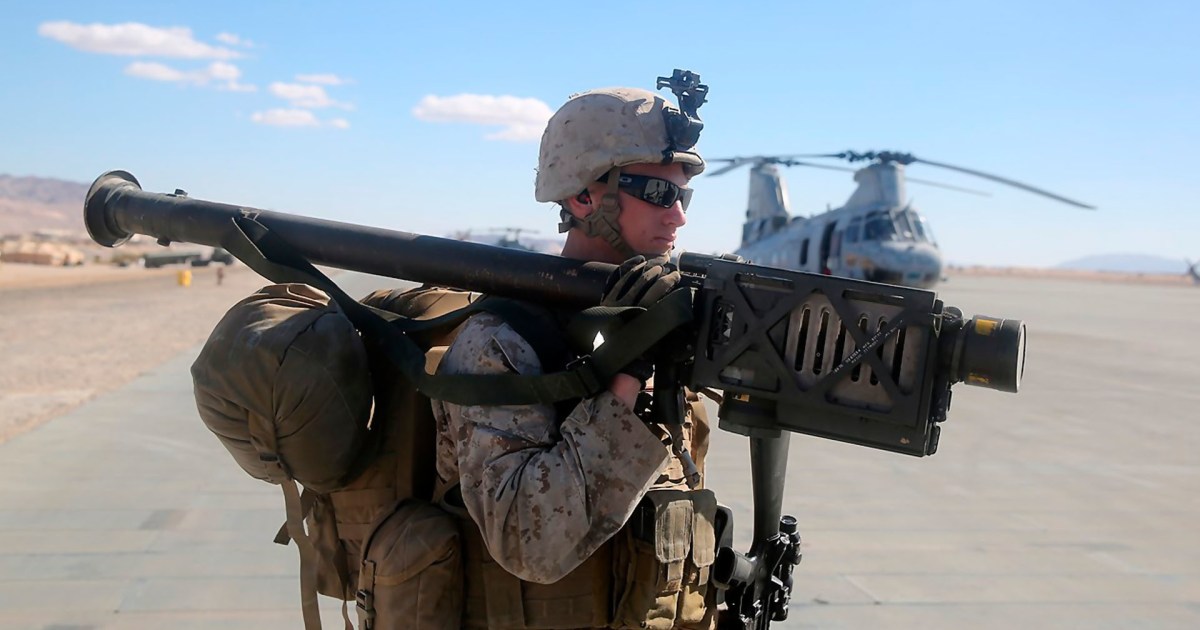Amid the escalating omens of war between Russia and Ukraine, the latter received from its neighbor Lithuania a shipment of American Stinger anti-aircraft missiles, which have a huge and accurate ability to hit the air target in any part of it.
In this report, we learn about the missile that gained a great reputation for its effectiveness, and was associated in memory with the Afghan war against the Soviet occupation.
It is one of the most famous anti-aircraft missiles, light and portable on the shoulder, and it was the most prominent weapon that helped - among other factors - to expel the Soviets after years of war on Afghan soil.
A surface-to-air missile against air targets at a low altitude, and it is one of the latest American-made anti-aircraft, anti-helicopter and anti-drone missiles.
Its early stages of production began in the 1960s, and its development began in 1972, and contains an acquaintance device called IFF, an electronic countermeasure device (ECCM) and an infrared countermeasure device (IRCM).
It is 1.52 meters long with a diameter of 70 millimeters, weighs 15.7 kilograms, has a range of 5 kilometers and a height of 4800 meters.
The warhead of the missile weighs 3 kilograms and is equipped with a proximity valve, and its speed is supersonic, and the propulsion system of the rocket engine works on solid fuel, with a separate booster for the first stage of the trajectory.
The "Stinger" does not need maintenance on the battlefield, because the missile and the launcher tube are fused together from the moment they leave the factory until the moment of launch, as the launcher tube is used once and then replaced with a new tube with a new missile.
It also has a passive optical finder, usually denoted by the letters POST, that is capable of searching for IR or UV rays.
It has been modified based on laser beams instead of infrared rays to guide the missile, and new generations have appeared.
This missile achieves securing a frontal air defense system from combat against fast flying low-altitude aircraft and against helicopters, as well as being used to defend small vital areas and support the early stages of airborne forces operations.
When aiming and launching the missile, it is taken into account to anticipate the future target point, although it has a rotation rate proportional to the rate of change of the line of sight between the missile and the target, and therefore it takes a path following the target, and the shooter is not required to follow the missile after its launch.
Washington had supplied the Afghan mujahideen, in the last century, with this type of missile, and they were able to destroy about 270 Russian planes and helicopters with it.
The three Baltic states (Estonia, Latvia and Lithuania) had announced earlier that they would provide Ukraine with anti-tank and anti-aircraft missile systems, and the necessary equipment to enhance military defense capabilities in the event of a Russian attack, and Washington had earlier delivered boats to the Ukrainian Navy equipped with Stinger missile systems.

